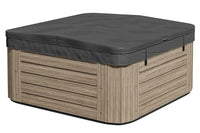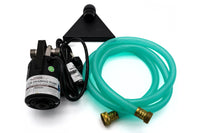Exploring 8 Aspects of Life That Can Influence Our Mental Health and Physical Well-Being
What Is Wellness?
At TCG Wellness, we see wellness as much more than just the state of our physical health. We tend to approach this topic as an overall assessment of our own physical and mental health, with several factors influencing one — or both — of these areas:

Factors that Contribute to Our Physical & Psychological Health
The Global Wellness Institute defines wellness as the “active pursuit of activities, choices and lifestyles that lead to a state of holistic health.” Moreover, wellness is a “lifestyle and personalized approach to living life in a way that … allows you to become the best kind of person that your potentials, circumstances, and fate will allow.”
Three Factors to Consider in Understanding Wellness :
- Wellness is not a static state of being. Rather, it is dynamic, ever-changing and active, involving “intentions, choices, and actions as we work toward an optimal state of health and well-being” in our everyday lifestyle.
- Although wellness is determined by the self, it is influenced by external factors including our social, physical and cultural environment. Therefore, wellness looks different for everyone and our physical and mental well-being drives our assessment of what wellness feels like for us. When pursuing wellness, we should aim for “personal harmony that feels most authentic to us,” considering our own “priorities, approaches, and aspirations, including our own views of what it means to live life fully.”
- Wellness is holistic: it involves pillars of wellness working interdependently to influence our physical and mental health. Therefore, attention should be given to all areas in striving for optimal well-being.
An Intersectional, Holistic Approach to Wellness
Wellness goes beyond a trip to the spa or a wellness retreat. Instead, factors that can contribute to our physical and mental health, as suggested in Table 1, can fall into 8 key areas of wellness, which can work together to determine our overall wellness on a continuum ranging from illness to optimal well-being: . The coexistence and interaction of these areas are sometimes referred to as “pillars” of wellness. Whether we see them as pillars or simply guideposts, examining various areas of our life and lifestyle can be helpful in examining, addressing and nurturing personal wellness.

8 Pillars of Wellness
Although we may sometimes pursue these areas individually, these 8 pillars of wellness seem to exist in an interdependent web. Thus, wellness, or lack thereof, in one of these areas may affect wellness in multiple other categories. For example, for someone pursuing a connection with a sense of something bigger than ourselves, addressing a spiritual pillar may lead to a community of like-minded people, consequently improving your social well-being. However, a conflict in a relationship may not simply affect your social well-being, but may also risk your emotional well-being.
1. Physical: Nourishing the Body
Physical wellness involves “caring for your body to stay healthy now and in the future.” In order to properly nourish your body, the Global Wellness Institute recommends placing importance on exercise, rest and restoration (especially if you are active), nutrition, sleep and healthy activities.

Striving for physical well-being may also help cultivate well-being in other pillars of wellness, including mental and emotional well-being. Light exercise improves mood and self-esteem, engaging in outdoor activities and leisure throughout the seasons fosters environmental wellness and exercising with others or participating in classes improves social health!
2. Mental: Nurturing a Healthy, Growing Mind
Mental wellness involves “growing intellectually, maintaining curiosity about all there is to learn” and emphasizes cognition with a lifelong commitment to learning new skills, problem-solving and creativity. Although it’s tempting to browse social media or turn on the television after a long day, try replacing some of your screen time with educational opportunities, a new hobby or creative task.

With emphasis on learning, your mental well-being can further your occupational wellness by helping you gain knowledge that opens up career opportunities and new projects!
3. Occupational: Finding Fulfilment at Work
Pursuing wellness in your occupation may go well beyond the pay cheque to feeling “personal satisfaction and enrichment from one’s work.” This involves contributing your skills in the workplace in a way that is rewarding to you.
With a large portion of our day being spent at work, the tasks we perform and the setting in which we complete them can affect both our mental and physical wellness, especially if you engage in physical labour or perform a job that requires sitting still for long periods of time. Further, your occupational wellness involves having a career that aligns with your personal values and skills, having positive relationships with your coworkers, feeling fulfilled by your work and finding work/life balance.
With an emphasis on developing healthy relationships with coworkers and participating in workplace activities, your workplace can also influence your social wellness. In addition, completing challenging tasks, problem-solving and acquiring new skills within the workplace can foster mental well-being.
Considering how much time we spend in the office (or working from home or on the road), your work environment influences your productivity, sense of peace and overall mood, which contributes to your environmental wellness, too!
4. Environmental: Creating an Environment that Fosters Wellness
Environmental wellness involves “fostering positive interrelationships between planetary health and human actions, choices, and wellbeing” and “understanding how your social, natural, and built environments affect your health and well-being.”

During the past few years with periods of social restrictions, it seems we have all become more aware of the impact of our surroundings. With many of us spending time indoors, the appearance and comfort of our built environment can encourage leisure and relaxation, therefore improving work/life balance and emotional well-being.
An important aspect of cultivating a healthy environment is spending time in harmony with our surroundings, and particularly nature, including walking, gardening, relaxing and biking. In this light, environmental wellness influences our physical and emotional well-being by nourishing our bodies and mind. After all, nature is proven to reduce stress and improve mood!
5. Emotional: Exercising Self-Awareness and Empathy
Emotional wellness seems to involve both acknowledging and respecting your own feelings, values and attitudes and “understanding the feelings of others.” This may require practicing self-awareness of your own feelings and exercising empathy to better appreciate the feelings of those around you.
With World Mental Health Day observed each October for mental health awareness, society is becoming more informed of how much mental health matters. Emotional wellness involves healthily managing your emotions, developing coping mechanisms, expressing your feelings and seeking help if you are struggling.

By helping you communicate your emotions and better empathize with those around you, this area of wellness has an influence on your social wellness as it allows you to build deeper connections.
6. Spiritual: Finding Purpose
Spirituality is one of those phrases that may stir-up various definitions and thoughts, often dependent on your own experiences. And some people may not spend much time considering this pillar at various stages of life. For our purposes, the Spiritual pillar includes a connection with a sense of something bigger than ourselves. Spiritual wellness may include “searching for meaning and higher purpose in human existence.” Finding purpose may be achieved with or without organized religion and includes pursuing activities in line with your beliefs and values. To pursue spiritual wellness, explore the values and beliefs that provide you with a sense of balance, peace and meaning.

Achieving spiritual wellness may improve health in a variety of other dimensions, including in our workplace and social life. Since occupational wellness often includes finding fulfilment, your satisfaction with work may be shaped by your spiritual values. In addition, having a healthy spiritual life can help you develop meaningful social connections and find community.
7. Financial: Achieving Financial Health
Financial wellness involves satisfaction with your current and predicted financial situation and “making informed financial decisions and investments.” The root of financial wellness is setting realistic goals to manage your resources and “live within your means.”
In addition, financial wellness includes having the awareness that “everyone’s financial values, needs, and circumstances are unique.”

Financial wellness can impact several pillars of wellness, as it influences our access to leisure outside of work, healthcare, nutrition, education, time we can spend learning new skills and healthy environments.
8. Social: Cultivating Community and Connection
In the social dimension, wellness involves “connecting and engaging with others and our communities in meaningful ways.” A healthy social life includes “maintaining healthy relationships, enjoying being with others, developing friendships and intimate relations, caring about others, and letting others care about you.”
Social wellness can be cultivated by spending time with friends and family, participating in community events, lending a helping hand and meeting new people.

Having strong social wellness can positively impact your occupational wellness as you develop relationships with your coworkers. Also, having friendships and relationships that allow you to express your feelings and exercise compassion have a positive influence on emotional wellness!
The Wrap-Up: Walking A Path to Wellness
Examining and pursuing wellness within 8 areas or pillars of life is meant to be a thoughtful primer and holistic approach to helping you understand and nurture a healthier you. Examining these 8 pillars of wellness may involve deliberate processes that introduce, alter or eliminate certain routines, actions and habits. Here are three simple suggestions that may help you as you walk the path towards greater wellness:
1. Practice Self-awareness and Regulation
Wellness often involves a conscious and self-directed process. In order to work toward it, it is important to remain in tune with your feelings, weaknesses and values to direct behaviour toward your wellness goals.
The Oxford English Dictionary says that self-awareness is “conscious knowledge of one’s own character, feelings, motives, and desires.” According to the Harvard Business Review, self-awareness helps us make sounder decisions, build stronger relationships, and communicate more effectively.” Since wellness is a personal journey, practicing self-awareness helps us determine what wellness feels like to us.
Next, self-regulation allows us to “direct our behaviour and control our impulses so that we meet certain standards, achieve certain goals, or reach certain ideals.” Practicing self-regulation helps us implement actions toward wellness to keep us “consistent with our deepest values” across the 8 pillars of wellness.
2. Implement Daily Habits
If 40% of our behaviour is repeated in habits, in the long-term, these habits will shape how we spend our time. Since wellness is an active, daily choice, implementing, altering or eliminating certain habits may help you move toward optimal well-being.
Habit loops are formed in four stages: (1) a cue, which triggers (2) a craving, which motivates (3) a response, and results in (4) a reward. Use this model to form new habits or change habits that move you toward the negative end of the continuum!
3. Create a Strategy that Works for You and Your Lifestyle
Pursuing wellness involves finding a balance that feels authentic to you and your lifestyle. If you’re having trouble moving toward a state of optimal well-being, then create a strategy that helps you stay accountable. In fact, scheduling and planning methods and/or having an accountability partner may work best for you! If you’re having trouble improving your physical and environmental wellness, then try scheduling daily walks with a friend. If you’re part of a workplace or post-secondary institution, then check for employee and student wellness services to guide you.
If you only see five or six relevant pillars that influence wellness in your life, that may be ok, too. Focus on those areas. Perhaps a few more areas will make themselves known to you at a later time.
Regardless of where you find yourself in life, again, the goal of the journey along the wellness path should be the discovery of a healthier you.









